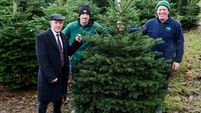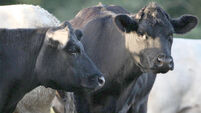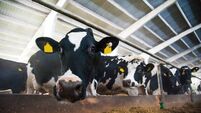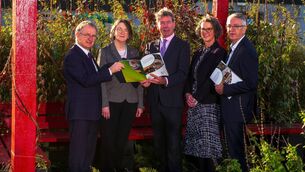Bad spring has left many cows in bad shape

Actions taken regarding disease control, cow nutrition, grassland management, bull selection and heat detection will largely determine income not only for this season but in the longer term.
The disastrous spring weather has seriously hit financial and management plans.
Grass growth was less than half the average spring growth, and grazing conditions have been very difficult.
Even with the best grazing techniques, a lot of pastures have been damaged, which will reduce grass production for the rest of the year.
On heavy land, very little early grazing took place, and cows were housed for most of the spring.
A lot of farmers have had to make additional financial arrangements with their banks to cover the huge costs of buying extra feed.
Cost cutting to compensate for the extra cost of feed and the low price of milk is a high priority for most farmers.
Unfortunately, opportunities for cost cutting without causing longer term damage are very limited. Cutting back in disease prevention and control is not an option.
But the biggest risk is that proper nutrition might be compromised. It is essential that cows are in body condition score (BCS) 2.75 to 3 for a satisfactory breeding performance.
The breeding target is to have as many cows as possible calving in the first six weeks.
Research results indicate that raising the six-week calving rate from 60% to 90% is worth over €200 per cow in the herd.
According to advisers and co-ops, the BCS of a high proportion of cows is too low at present. Immediate action has to be taken to bring BCS up to target level and have cows in a rising plane of nutrition at breeding.
Figures from co-ops show that average milk proteins were significantly sub-normal in mid-April, a sure sign that cows were not getting sufficient energy in their feed.
Heifers have also suffered due to not having access to early grass. Immediate action has to be taken to get them up to target weight (320 to 340kg) for the start of the breeding season.
Ensure all cows are adequately fed and that feed intakes matches output.
Normally cows on good quality grass full time should get about 2 kg of concentrates, at least up to the end of the breeding season. However, many herds will require higher levels this year.
This concentrate should contain top quality trace elements, and adequate protection against grass tetany.
Where cows are part-time grazing with silage indoors, they will require 5-6 kgs of concentrates to support 27 litres of milk. Thin cows may have to be put on once-a-day milking to bring BCS up to target for breeding.
Successful farmers say that the cows are the best indicator of how much concentrates should be fed.
If cows are getting too thin and are milking poorly, with low protein milk, and being forced to graze too tightly, they are being under fed (if disease is ruled out).
If, on the other hand, cows are not grazing out their paddocks to 4.5cms (2 inches), concentrates should be reduced, or grazing areas could be reduced.
As concentrates are 4-5 times the price of grass, they should not be used as a substitute for grass, but as a supplement when required.
Late calvers have lower grass intakes, and may need extra supplements.













